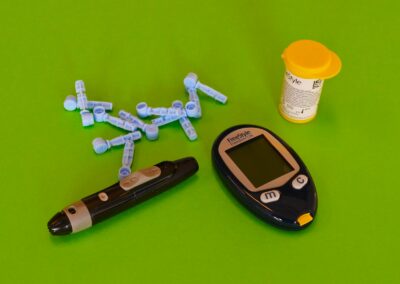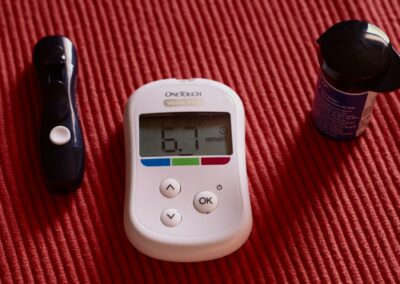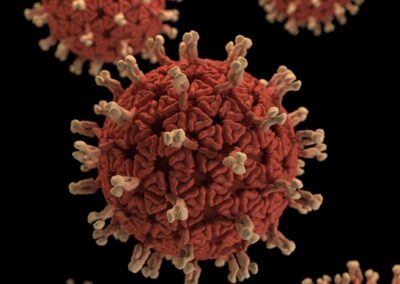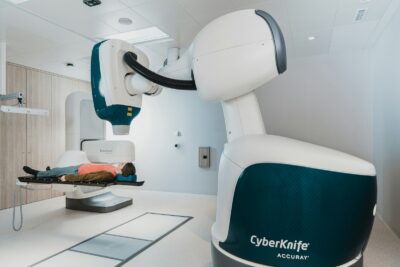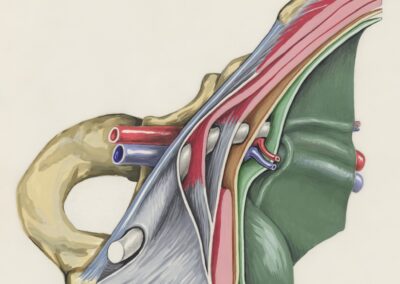Leveraging Digital Twins to Revolutionize Chronic Disease Monitoring
The Role of Digital Twins in Chronic Disease Monitoring
The integration of digital twins for chronic disease management is marking a significant shift in healthcare technology. Digital twins are sophisticated virtual models that replicate physical entities, including individuals with chronic conditions. These digital replicas are created using real-time data from various sources such as wearable sensors, electronic health records, and patient-reported outcomes. By continuously updating and analyzing this data, digital twins provide a comprehensive view of a patient’s health status, enabling proactive management of chronic diseases.
In Saudi Arabia and the UAE, where healthcare systems are rapidly advancing, digital twins offer a promising approach to chronic disease management. In Riyadh, for instance, healthcare providers can use digital twins to monitor patients with conditions like diabetes, heart disease, and asthma more effectively. These virtual models allow for the real-time tracking of vital signs, medication adherence, and lifestyle factors, helping clinicians make informed decisions and adjust treatment plans promptly.
Dubai’s innovative healthcare landscape benefits from digital twin technology by offering personalized care for chronic disease patients. Through detailed simulations and predictive analytics, digital twins can forecast disease progression and potential complications, allowing for tailored treatment plans. This level of personalized monitoring enhances patient outcomes and optimizes resource allocation within the healthcare system.
Optimizing Treatment Plans with Digital Twins
One of the most transformative applications of digital twins in healthcare is the optimization of treatment plans. By leveraging detailed simulations, healthcare providers can evaluate the potential impact of different treatment options on a patient’s health. This approach allows for the customization of treatment strategies based on individual patient data, improving the effectiveness of interventions and reducing the risk of adverse effects.
In the context of chronic disease management, digital twins enable healthcare professionals to simulate various scenarios and predict how a patient’s condition might respond to different therapies. For example, in the UAE, a digital twin of a patient with hypertension could be used to test the effectiveness of different medication regimens or lifestyle changes before implementation. This predictive capability helps in refining treatment plans to achieve better health outcomes and enhance patient satisfaction.
Additionally, digital twins facilitate continuous monitoring and adjustment of treatment plans. By integrating real-time data, healthcare providers can track the effectiveness of ongoing treatments and make necessary modifications based on the patient’s current health status. This dynamic approach ensures that treatment plans remain aligned with the patient’s evolving needs, ultimately leading to more effective management of chronic conditions.
The Future of Digital Twins in Chronic Disease Management
The future of digital twins for chronic disease management holds immense potential for further advancements and broader applications. As technology progresses, digital twins will become increasingly sophisticated, incorporating advanced analytics and artificial intelligence to provide deeper insights into chronic disease management. These advancements will enable even more precise simulations and predictive models, enhancing the ability to tailor treatments to individual patients.
In Saudi Arabia, the continued investment in digital twin technology will drive innovation in chronic disease management. Emerging trends include the integration of digital twins with other technologies such as blockchain for secure data management and telemedicine for remote consultations. These integrations will enhance the overall effectiveness of chronic disease management and ensure that patients receive timely and personalized care.
Similarly, in the UAE, digital twins will play a crucial role in advancing preventive care and early intervention strategies. By leveraging real-time data and predictive analytics, healthcare providers can identify potential health issues before they become critical, enabling proactive management and improving overall health outcomes. The ongoing development of digital twins will contribute to the evolution of healthcare practices, aligning with the region’s commitment to technological innovation and excellence in patient care.
Conclusion
Digital twins are poised to revolutionize chronic disease management by offering advanced monitoring and treatment optimization capabilities. By creating virtual models of patients and leveraging real-time data, healthcare providers can enhance the effectiveness of treatment plans, improve patient outcomes, and streamline healthcare delivery. For business executives and healthcare professionals in Saudi Arabia and the UAE, embracing digital twin technology represents a strategic opportunity to advance chronic disease management and drive innovation in healthcare. As technology continues to evolve, digital twins will play an increasingly vital role in shaping the future of healthcare.
—
#DigitalTwinsChronicDiseaseManagement #ChronicDiseaseMonitoring #OptimizingTreatmentPlans #DigitalTwinsHealthcareApplications #SaudiArabiaHealthcareTechnology #UAEDigitalHealthInnovation #RiyadhChronicDiseaseManagement #DubaiHealthcareAdvancements #DigitalTwinsInMedicine #ModernHealthcareSolutions








